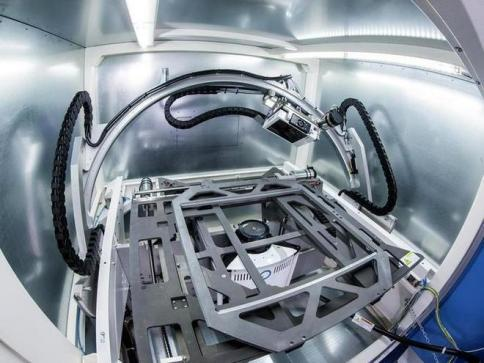What is the purpose of non-destructive testing?
Release time:2024-05-15Publisher:Jeenoce
Non destructive testing is the use of characteristics such as sound, light, magnetism, and electricity to detect whether there are defects or unevenness in the tested object without damaging or affecting its performance. It provides information on the size, location, nature, and quantity of defects, and then determines the technical status of the tested object (such as qualification, remaining life, etc.).
So what is the purpose of non-destructive testing?
(1) Quality management.
The performance and quality level of each product are usually clearly defined in its technical documents, such as technical conditions, specifications, acceptance standards, etc., which are characterized by certain technical quality indicators. One of the main purposes of non-destructive testing is to provide real-time quality control for raw materials and components of non continuous processing (such as multi process production) or continuous processing (such as automated production lines), such as controlling the metallurgical quality of materials, processing quality, microstructure status, coating thickness, and the size, orientation, and distribution of defects. In the process of quality control, feedback of the obtained quality information to the design and process department can in turn promote further improvement of product design and manufacturing processes, and product quality will inevitably be consolidated and improved accordingly, thereby achieving the effect of reducing costs and improving production efficiency. Of course, non-destructive testing technology can also be used to control the quality level of raw materials or products within the scope of design requirements based on acceptance standards, without the need for unlimited improvement in quality requirements. Even without affecting design performance, certain defective materials can be used to improve social resource utilization and economic benefits.
(2) In service testing.
The use of non-destructive testing technology to monitor the operation of devices or components, or to conduct regular inspections during maintenance periods, can timely detect hidden dangers that affect the safe operation of devices or components, and prevent accidents from occurring. This is of significant importance for important large-scale equipment, such as nuclear reactors, bridge buildings, railway vehicles, pressure vessels, transportation pipelines, aircraft, rockets, etc., as it can prevent potential problems before they occur. The purpose of in-service testing is not only to timely detect and confirm hidden dangers that endanger the safe operation of the device and eliminate them, but more importantly, based on the early defects discovered and their development degree (such as the initiation and development of fatigue cracks), on the basis of determining their orientation, size, shape, orientation and properties, it is also necessary to evaluate whether the device or component can continue to be used and its safe operating life. Although non-destructive assessment work has just begun in China, it has become an important development direction of non-destructive testing technology.

(3) Quality appraisal.
For finished products (including materials and components), final inspection should be carried out before assembly or use, which is called quality appraisal. Its purpose is to determine whether the inspected object has achieved the design performance and can be used safely, that is, to judge whether it is qualified. This is not only an acceptance of the previous processing process, but also to avoid potential hazards for future use. The application of non-destructive testing technology in every (or one or several) process of casting, forging, welding, heat treatment, and cutting to check whether the materials or components meet the requirements, in order to avoid further futile processing of unqualified products. This work is generally referred to as quality inspection and essentially falls within the scope of quality appraisal. Quality acceptance and identification before product use are very necessary, especially for products that will be used under complex and harsh conditions (such as high temperature, high pressure, high stress, high cyclic load, etc.). In this regard, non-destructive testing technology has demonstrated unparalleled superiority in performing 100% inspection.

